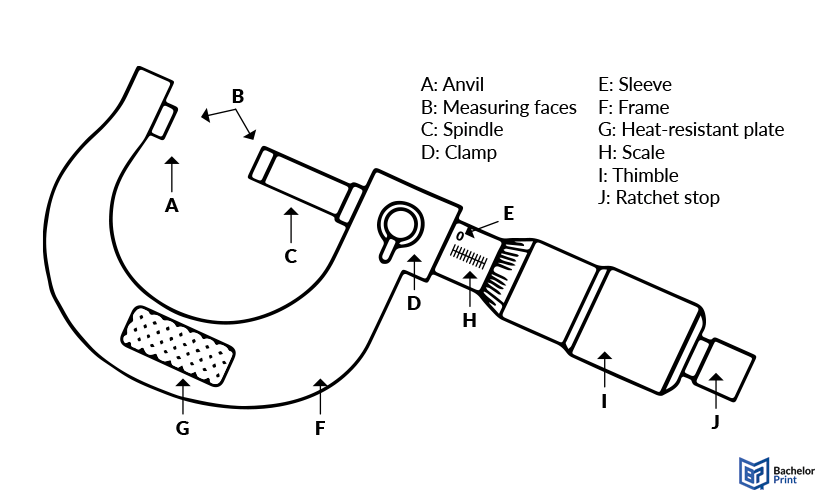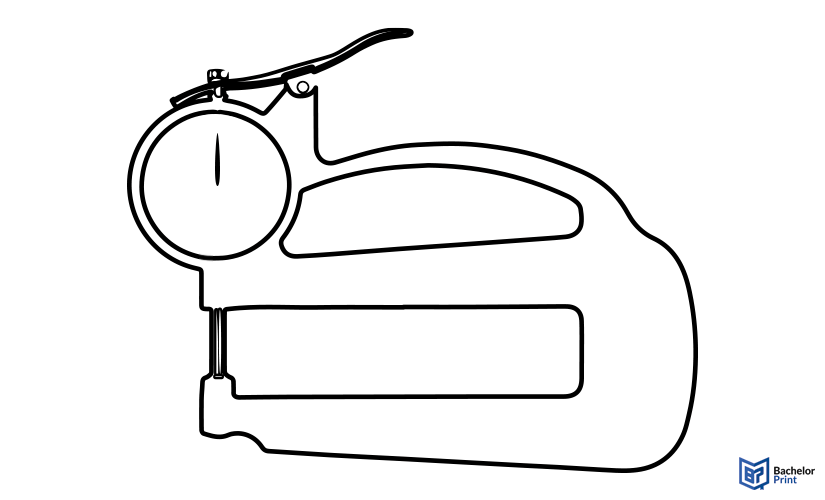
Caliper is a term used to describe the measurement of paper thickness. This measurement, often referred to as “paper caliper,” plays an important role in understanding how printer paper feels and performs, as it is closely related to paper weight and overall quality. Whether for printing, packaging, or design, we’ll explore what a paper caliper is, how it’s measured, and why it matters.
Definition: Caliper
While “calipers” (BE: callipers) is a tool used to measure the length, width, thickness, and diameters of an object or hole, the term “caliper” (BE: calliper) or “paper caliper” refers to the measurement of how thick a sheet of paper or other materials is. Internationally, caliper is measured in microns (µm), while in North America, it’s expressed in points (pt).
Printing services at BachelorPrint
- Individual solutions & personal support
- High print quality & fast production times
- Wide range of print products for every need
Learn more!
Caliper vs. paper weight
The difference between paper weight and caliper is that caliper measures thickness, while weight measures mass. Although paper thickness affects paper weight, they’re not the same. For example, two sheets of paper with the same paper size and weight can have different calipers if they are made from different materials or have different coatings.
Microns vs. points
As mentioned before, caliper can be measured in either microns or points. Both will be explained below.
In regions using the metric system, paper caliper is measured in microns with a micrometer or a thickness gauge. One single micron equals 0.001 millimeter, which makes it a highly precise unit for determining a paper’s thickness.
As North America uses the imperial system, the thickness of paper is measured in points, with one point equaling 0.001 inches. However, “point” can also be referred to as “mil” — an engineering term — which specifically measures plastic-based material, e.g., laminated synthetic paper like waterproof paper. “Mil” originates from the French word “mille,” meaning 1,000. You can use a point micrometer or a thickness gauge to measure points as well since they can measure in any unit.
Measurement devices
There are two types of precision measuring devices when it comes to paper thickness: with a micrometer or a thickness gauge.
Micrometer

A micrometer is the most common device and can be divided into the traditional analogue type or a digital model. In the picture above you can see the traditional version, whereas the digital version has a screen and buttons beneath or right next to the clamp.
- To accurately measure caliper, it’s important to clean the anvil and spindle.
- You can then place the paper between them and turn the thimble to lock it in place.
- Read the value on the main scale H (in units of 0.5 mm) and the scale on the thimble (in units of 0.01 mm).
- The values are then added, e.g., 0.10 + 0.02 = 0.12 mm → 120µm
Thickness gauge

A thickness gauge is another option for measuring paper thickness. While it can also measure materials such as sheet metal or plastics, it’s often used in printing for quick checks of paper thickness. It also exists as a traditional model with a scale and as a digital model with a screen. Thickness gauges employ a spring-loaded mechanism to hold the material in place. This mechanism ensures consistent measuring by not compressing the material too much.
High-quality color copies from just £0.15
- Choose from different paper formats & paper weights
- Configure finishing options & add any extras you need
- Easy online ordering process with delivery to your doorstep
Learn more!
FAQs
Caliper refers to the thickness of a single sheet of paper, which is expressed in microns or points.
Caliper is measured using precision tools such as a micrometer or thickness gauge.
Internationally, paper caliper is measured in microns (µm), whereas in North America, it is measured in points (pt).
Paper weight refers to the mass of the paper, while a caliper measures its thickness. Two papers can have the same weight but different calipers depending on material density.